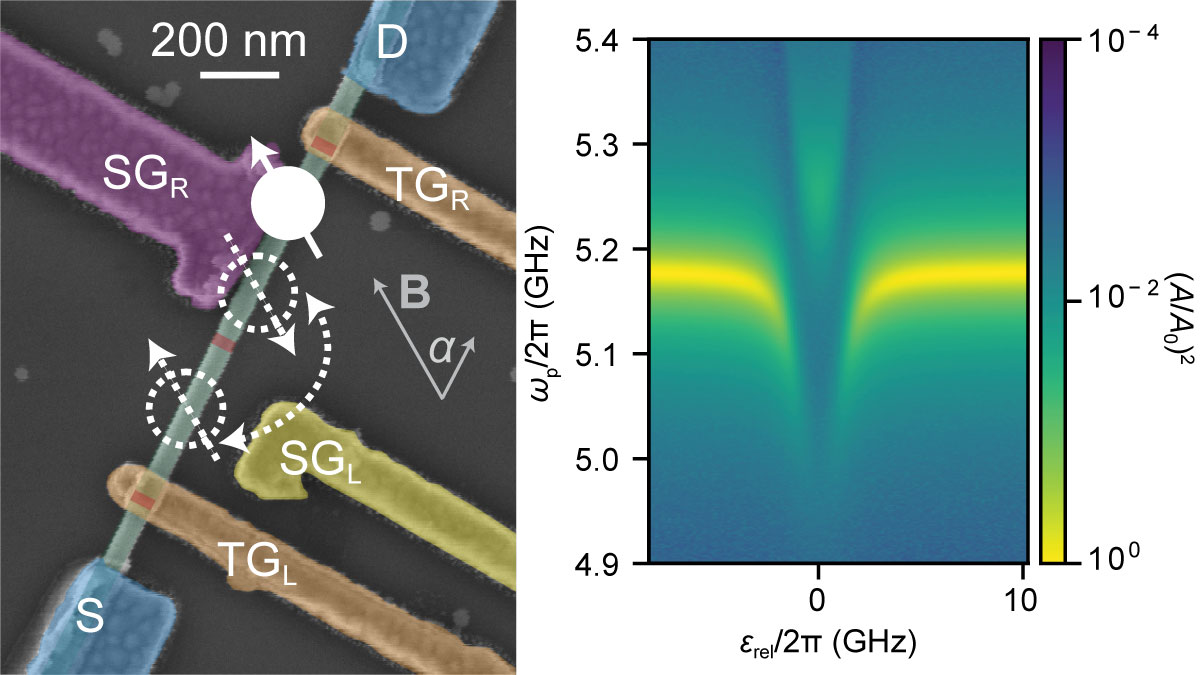suspended CVD graphene
Jann Ungerer, Alessia Pally and collaborators have achieved strong coupling of a singlet-triplet qubit with a microwave photon. This work has now appeared in Nature Communications. They have employed crystal-face controlled nanowires that were grown at Lund university and provided “built-in” and highly stable double quantum dots achieved during growth by Sebastian Lehmann in the group of Kimberely Dick Thelander. The team operated the double quantum dot (DQD) system in an even charge regime and moved into a singlet-triplet regime by applying a magnetic field in the range of ~100 to ~400mT, when the triplet T(1,1)+ states starts to hybridize with the singlet S(2,0) state due to intrinsic spin-orbit interaction. The microwave resonator was realized by a coplanar transmission line of length λ/2 made from a thin-film of NbTiN. It was coupled at the voltage anti-node to one plunger gate of the DQD. The authors report a spin-photon coupling strength of g/2π = 139 ± 4 MHz. This coherent coupling exceeds the resonator decay rate κ/2π = 19.8±0.2MHz and the qubit dephasing rate γ/2π = 116 ± 7 MHz, placing the system in the strong coupling regime, see tha paper: NatureCommunications (2024) 15:1068.










